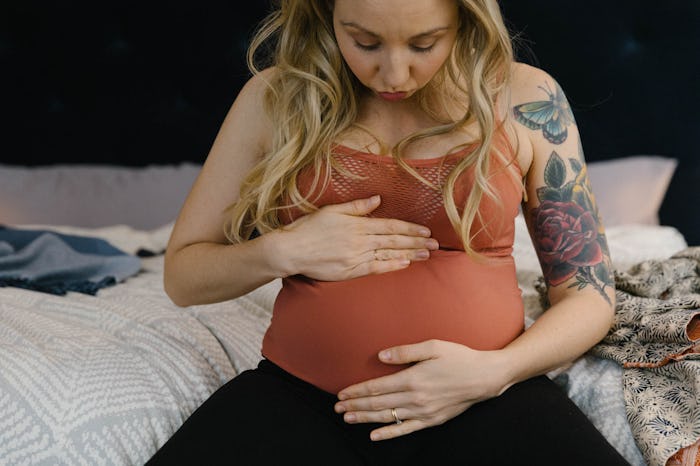Life
Here's How Painful Those First Few Labor Contractions Can Be
At the end of pregnancy it's easy to analyze every ache, pain, and odd feeling, looking for a sing that labor is right around the corner. When your body is constantly changing, and Braxton-Hicks contractions can throw you for a loop, it's difficult to tell when it's go time and when you're experiencing another false alarm. So, do "real" contractions start out painful, or do they slowly build up intensity? How can a soon-to-be mom figure out when it's time to make her way to the the hospital or birthing center?
It turns out there are a few surefire ways to tell the difference between real labor and other types of pregnancy pain. In the end, you just have to know what you're looking for. According to the American College of Obstetricians and Gynecologists (ACOG), you can generally tell the difference between real labor and false labor (or Braxton Hicks) contractions by how strong they are and where they start in your body. For example, generally labor pains will start in your back and radiate around to the front, while false labor feels like a tightness in your abdomen.
While Braxton Hicks contractions can be pretty damn painful, they usually ease up when you relax or change position. Real labor contractions tend to get worse as labor progresses, though, and regardless of what position you're in, according to What to Expect. Mayo Clinic notes that sometimes it can be hard to tell the difference between real labor and false labor, or between real labor and other kinds of pregnancy pain, especially if you are a first-time mom. If you are unsure, you should absolutely not hesitate to make a trip to the hospital or a call to your OB-GYN or midwife, especially if you think it's go time and you're less than 37-weeks along.
According to ACOG, you can generally tell the difference between real labor and false labor by how strong they are. According to their website, real contractions start out more painful than Braxton Hicks contractions, and get worse as your labor progresses.
Another clue is where you feel pain. ACOG notes that "real" contractions tend to start in your back and move to the front of your abdomen, while Braxton Hicks contractions feel much more like a general tightening of your baby bump. Unfortunately, that doesn't always help, since people experience pain differently and might feel pressure, cramps, tightness, or a backache with their very real labor contractions during early labor.
What to Expect adds that it can be confusing at first because your very real labor contractions might actually feel familiar, like a stomach ache, gas, or bad menstrual cramps. However, while these types of pains tend to get better with time, movement, or rest, real labor pains get worse. The same site explains that Braxton Hicks contractions might also feel legitimately painful to you, especially if you are a first-time mom and they are not something you've ever felt before. However, they will generally slow down and get shorter with time, while labor contractions will become more frequent and lengthen to an average of 40 to 90 seconds during active labor.
As Mayo Clinic explains, it's not always easy to tell if your pains are a real contraction or simply the result of a bad burrito. That's why it's important to listen to your body and call your doctor or midwife if you think you might be in labor, especially if you are less than 37-weeks along, your water breaks, or you have vaginal bleeding. Even if you go to the hospital and end up getting sent home, it's better to be safe than sorry... and you absolutely shouldn't feel embarrassed.
